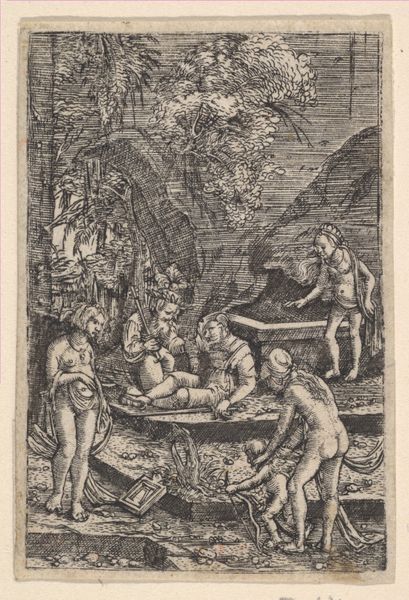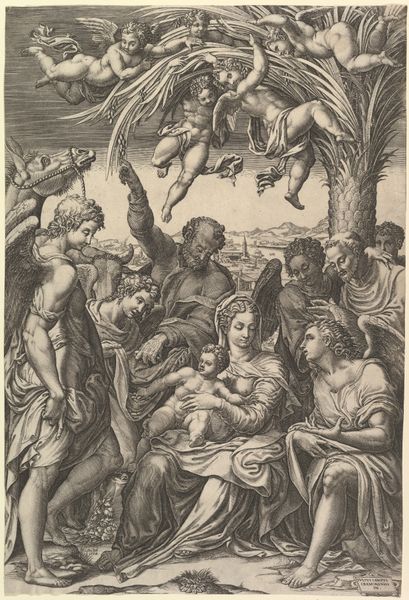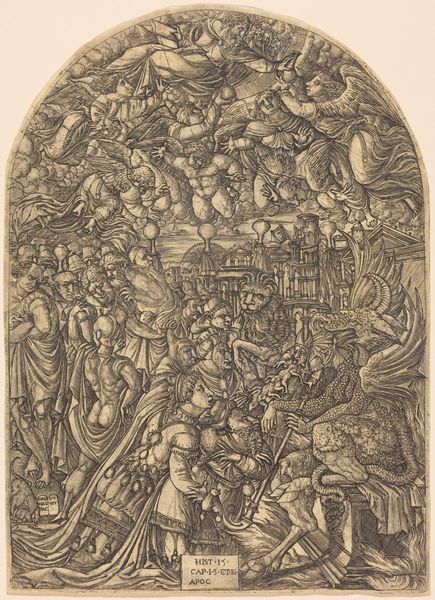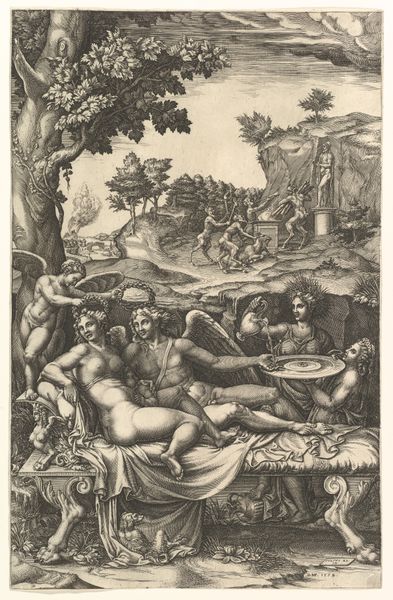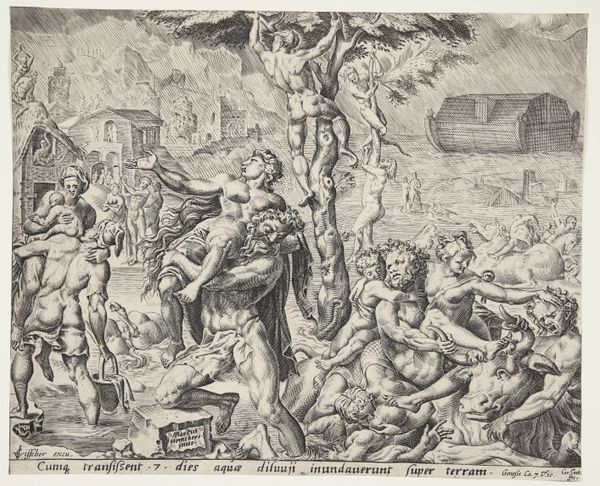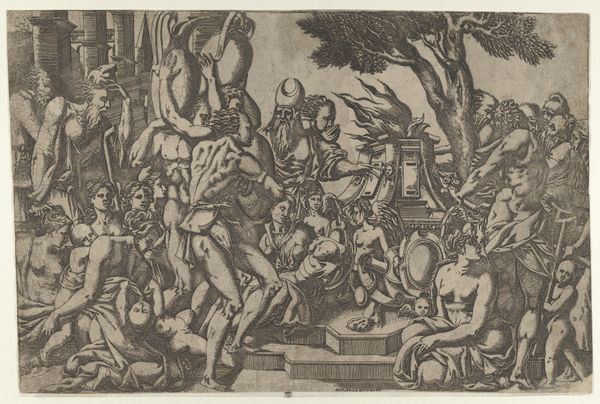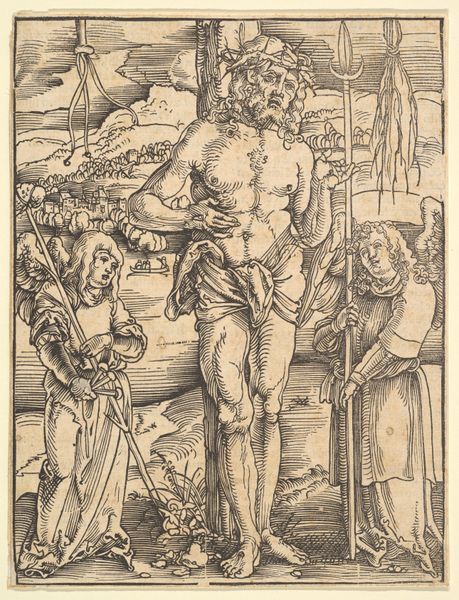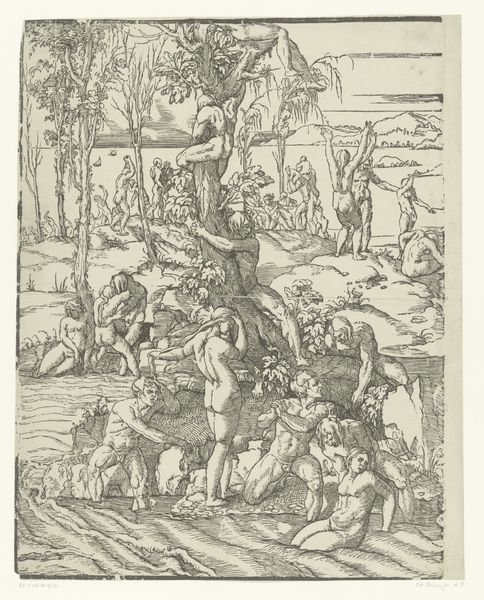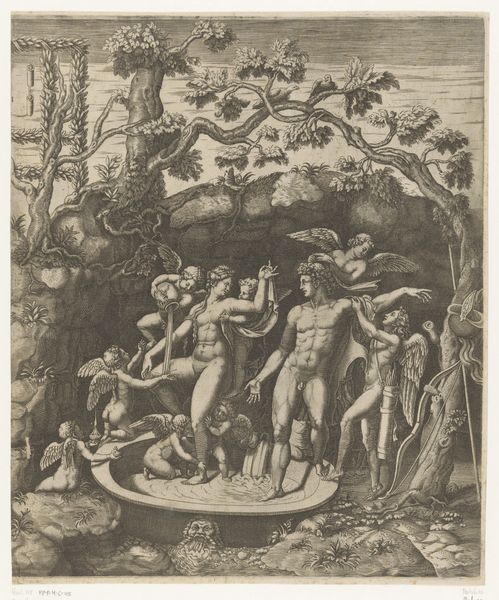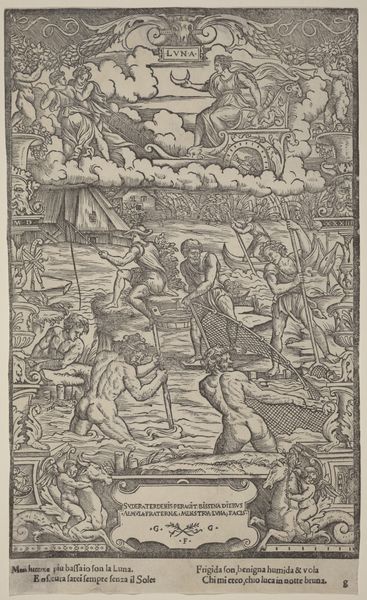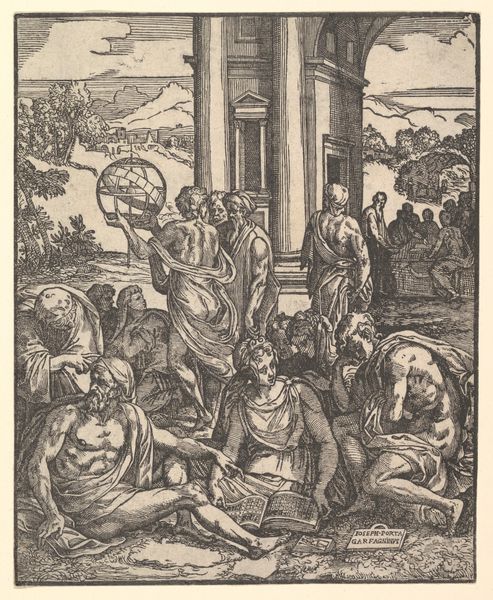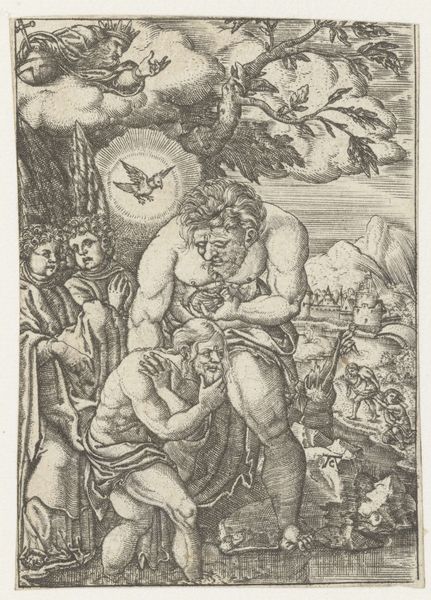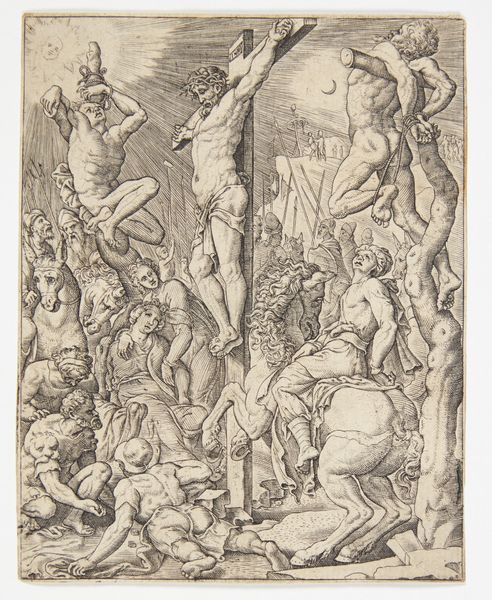
drawing, print, engraving
#
drawing
#
ink drawing
#
pen drawing
# print
#
pencil sketch
#
figuration
#
11_renaissance
#
line
#
pen work
#
history-painting
#
northern-renaissance
#
engraving
Dimensions: height 100 mm, width 67 mm
Copyright: Rijks Museum: Open Domain
Editor: We’re looking at “Baptism of Christ,” an engraving from the early to mid-16th century by Monogrammist AC. It’s a fairly small print, but the composition is dense, filled with figures and intricate detail. It gives a feeling of reverence and awe. What do you see in this piece? Curator: The power dynamics are striking, aren’t they? This scene, rendered with such intense detail in the Northern Renaissance style, depicts a pivotal moment of spiritual submission and recognition. But let's think about how an event like baptism signifies entry into a religious and social structure, marking inclusion but simultaneously drawing boundaries and implying exclusion. How might this image reinforce existing hierarchies within the church and society at the time? Editor: That's interesting. I was just focused on the religious narrative. The divine light shining down, the angels, the figures of John and Jesus... Curator: Exactly! And notice how the artist uses line and shading to create a distinct visual hierarchy. God and the angels inhabit a celestial realm filled with light, contrasting with the earthly, more shadowed space occupied by John and Jesus. Consider this alongside contemporary political dynamics. Religious imagery during this era often served to legitimize authority. How might images like these have influenced people's perceptions of power – both spiritual and earthly? Editor: So, you’re suggesting the image does more than just illustrate a religious story? It actively participates in shaping the viewer’s understanding of authority? Curator: Precisely. Art is never neutral. By carefully analyzing the visual language – the composition, the use of light and shadow, the positioning of figures – we can unlock the ways in which art reflects and reinforces the cultural and political ideologies of its time. What is the visual strategy behind depicting the main actors and divinity in this historical context? Editor: I see that now. Thanks! I never thought of it that way before, but it gives the work much more social and political depth. Curator: It’s about moving beyond the surface and asking, “Whose voices are amplified, and whose are silenced?"
Comments
No comments
Be the first to comment and join the conversation on the ultimate creative platform.
